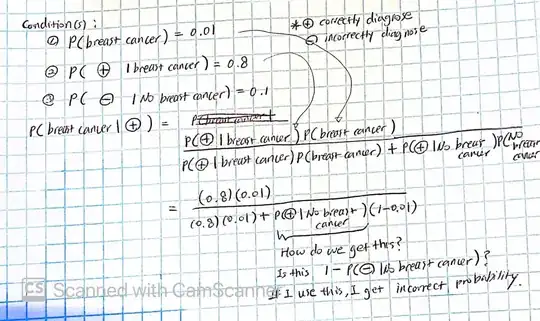I am studying Bayes's rule in the Mathematical Statistics and Data Analysis by John A. Rice (3rd edition) and had a question about the example from the book.
Conditions:
- In the absence of any special information, the probability that a woman (of the age and health status of this patient) has breast cancer is 1%.
- If the patient has breast cancer, the probability that the radiologist will correctly diagnose it is 80%.
- If the patient has a benign lesion (no breast cancer), the probability that the radiologist will incorrectly diagnose it as cancer is 10%.
The question is, "What is the probability that a patient with a positive mammogram actually has breast cancer?"
Using Bayes' rule, I have below.
 How would you get the probability of 'correct diagnose given no breast cancer'?
The correct answer to this example is 0.075 (7.5%), and I am not sure how they got to this number.
How would you get the probability of 'correct diagnose given no breast cancer'?
The correct answer to this example is 0.075 (7.5%), and I am not sure how they got to this number.